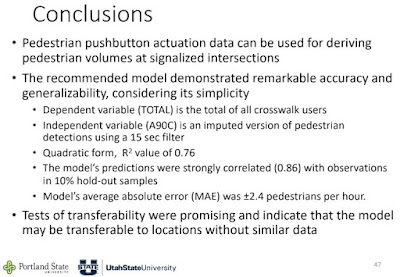The technical committee for our Metropolitan Planning Organization meets on Tuesday the 14th, and in their agenda is finally some published information on the Safety Plan project. It has not had agendas or meeting packets published in any formal Public Notice process, and so it has been operating largely in stealth mode.
Here is a proposed list of twenty "high injury crash corridors."
 |
| High crash corridors |
These track closely to any intuitive sense of zoomy, busy streets that are uncomfortable for walking and biking.
One way the table might be improved is to focus less on "daily traffic," as if the primary problem was simply count of cars and drivers, and to replace that column with a measure of speed and perhaps add a measure of lane width. These vary of course over a corridor segment of a mile or two, but we should highlight that a street with 20,000 daily car trips averaging 20mph is less lethal than a stroad with 20,000 daily trips at an average of 40mph. The count of cars by itself is not a very helpful measure.
At number six on the list is Silverton Road from the intersection with Portland Road to west of I-5.
 |
| Silverton Road bond project |
As it happens, this segment will be one of the first rehabilitation projects funded by the Salem infrastructure bond. Council recently saw the sidewalk projects rolled up into the larger road project.
Over at our Strong Towns group recently there has been discussions of 4/3 safety conversions and of more narrow lane widths.
There is an advocacy opportunity here! At least in published materials, it looks very much like Salem Public Works is defaulting to business as usual with 20th century standards, and not looking forward to our needs on climate and safety in the 21st century. It is not clear lane widths are being made as narrow as possible and that our default is a 4/3 conversion. Instead, narrow lanes and 4/3 conversions are the exception. We should flip that.
 |
| Oct. minutes on bike counts |
Back to the MPO, in the meeting packet are the October minutes, and they have a short discussion of bike counts. It says that "using the traffic signal cameras...did not produce reliable counts."
 |
| from Nov. 3rd seminar |
Earlier this month PSU just had a seminar on doing automated counts of walking traffic by using beg buttons and traffic cameras, "Active Transportation Counts From Existing On-Street Signal And Detection Infrastructure." It seemed to be very promising. A key seemed to be correlating video with button pushing, and bike detection does not generally have both of them.
Hopefully something similar will emerge for bike counting, as relying on volunteers is not scalable or sustainable, especially when local governments have seemed more interested in merely having data and not so much in acting on the data.
The TAC meets on Tuesday the 14th, and the meeting information with agenda and packet is here.


No comments:
Post a Comment